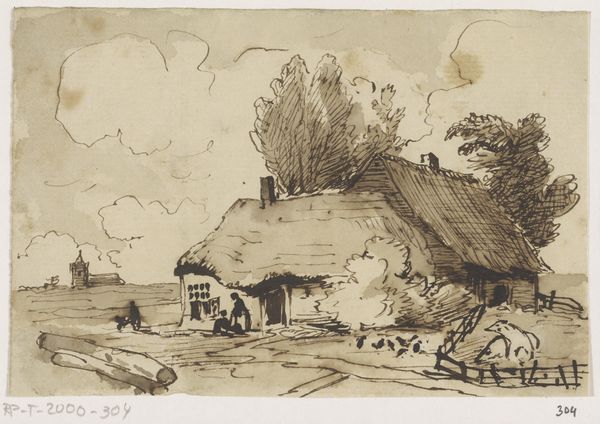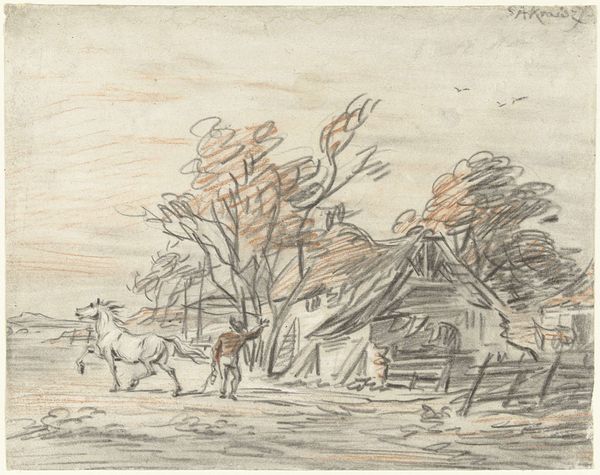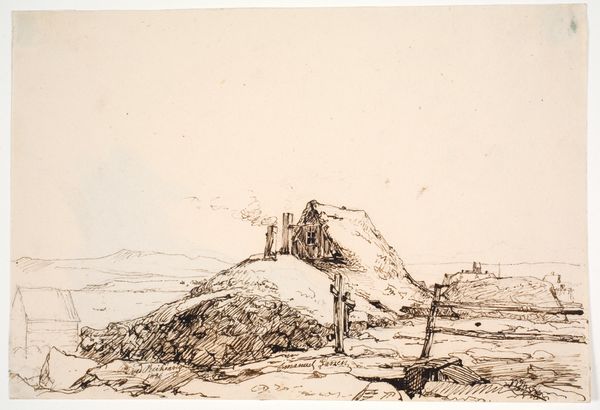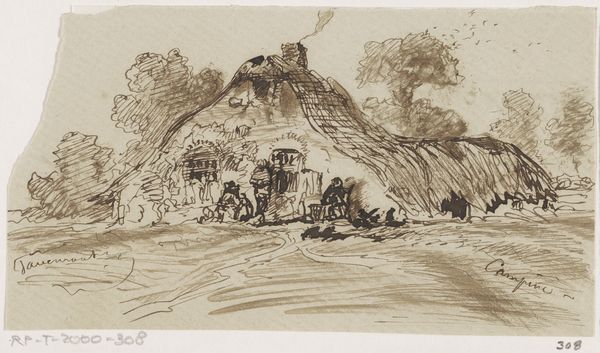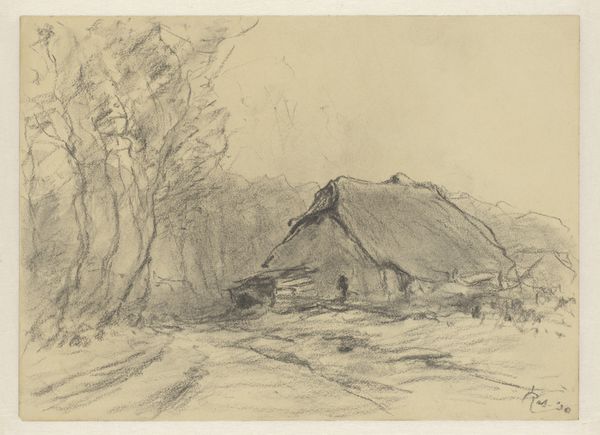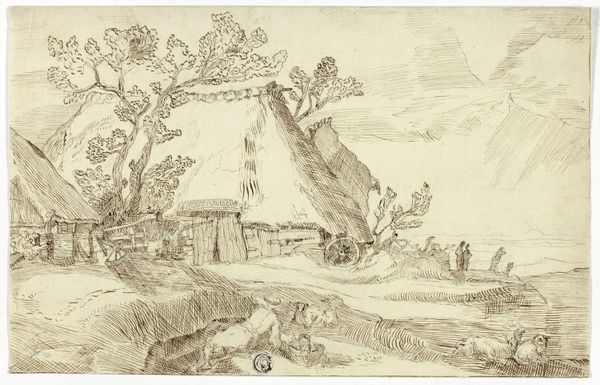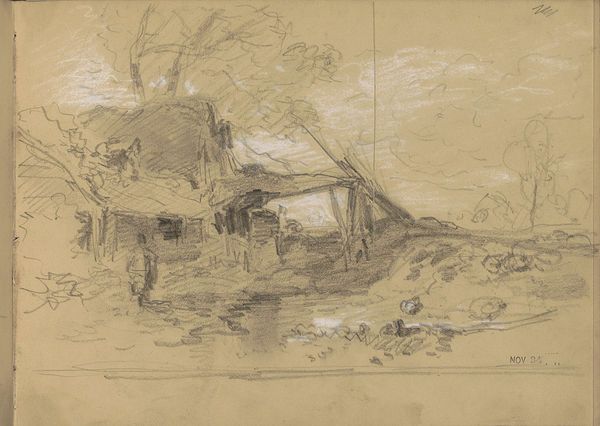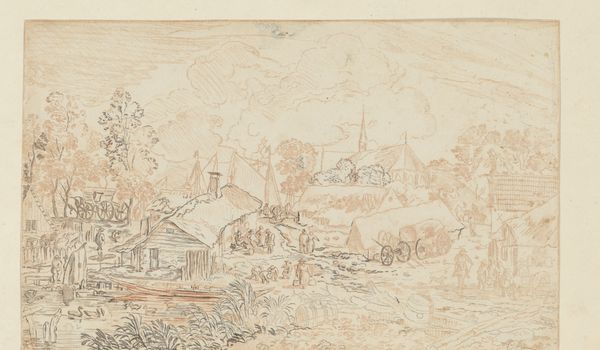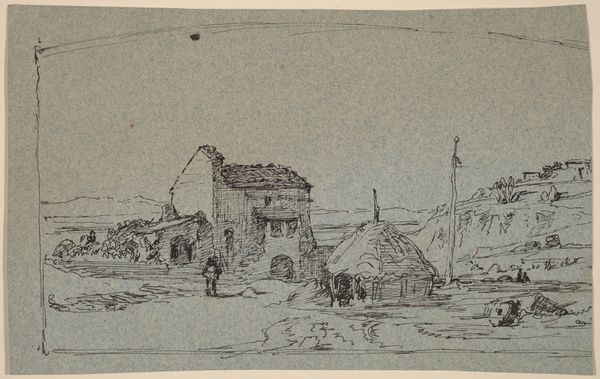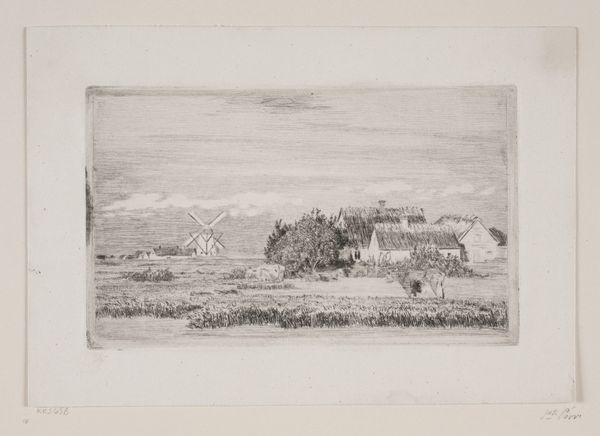
Dimensions: height 98 mm, width 167 mm
Copyright: Rijks Museum: Open Domain
Curator: Welcome. Before us hangs "Heide in Noord-Brabant met huisjes," created between 1840 and 1870 by Johannes Tavenraat. It’s currently held here at the Rijksmuseum. The medium appears to be watercolor and drawing on paper. Editor: Immediately, I’m struck by the earth-toned palette. It’s mostly shades of brown, which gives the piece a melancholic, almost austere quality. And note the texture rendered throughout, a palpable, almost haptic sense of landscape. Curator: Absolutely. Let's consider the social context of Tavenraat's era. The rise of Romanticism greatly influenced landscape painting, emphasizing the emotional and spiritual connection to nature. Such rustic scenes often depicted an idealized version of rural life, responding to increasing industrialization. Editor: Observe the composition, how Tavenraat divides the picture plane. The eye is led first through the figures and ground textures in the foreground, and ultimately resolves at the thatched-roofed building as a focal point—the horizon of course is muted by these forms. It creates an asymmetrical balance that keeps it engaging. What could you say of that from your perspective? Curator: Well, structurally, it’s fascinating to consider Tavenraat’s use of line. He articulates the houses, sky and inhabitants with rapid and loose lines. The overall effect, as you said, creates depth through this application of hatching, activating what is, quite frankly, a monochromatic illustration. Editor: Precisely, but isn’t this very constructed nostalgia itself implicated in broader political shifts? Land ownership and class divisions surely factored into both the appeal and creation of such bucolic imagery. There is social criticism at play too I think. Curator: I can see that argument, yes. It does raise questions about the idealization of poverty, though the scene feels honest in its details. Editor: Well, looking again, that might very well be an intentional and careful placement of forms, leading towards this sort of social commentary... Curator: Ultimately, the artwork provides a unique glimpse into 19th-century Dutch rural life, presented with a captivating level of technique that cannot be overstated. Editor: I’m now seeing how those textures are a form of communicating the difficult work of the peasant classes too. Thanks to Johannes Tavenraat for this subtle work and thanks to this institution that keeps the cultural memory alive!
Comments
No comments
Be the first to comment and join the conversation on the ultimate creative platform.

